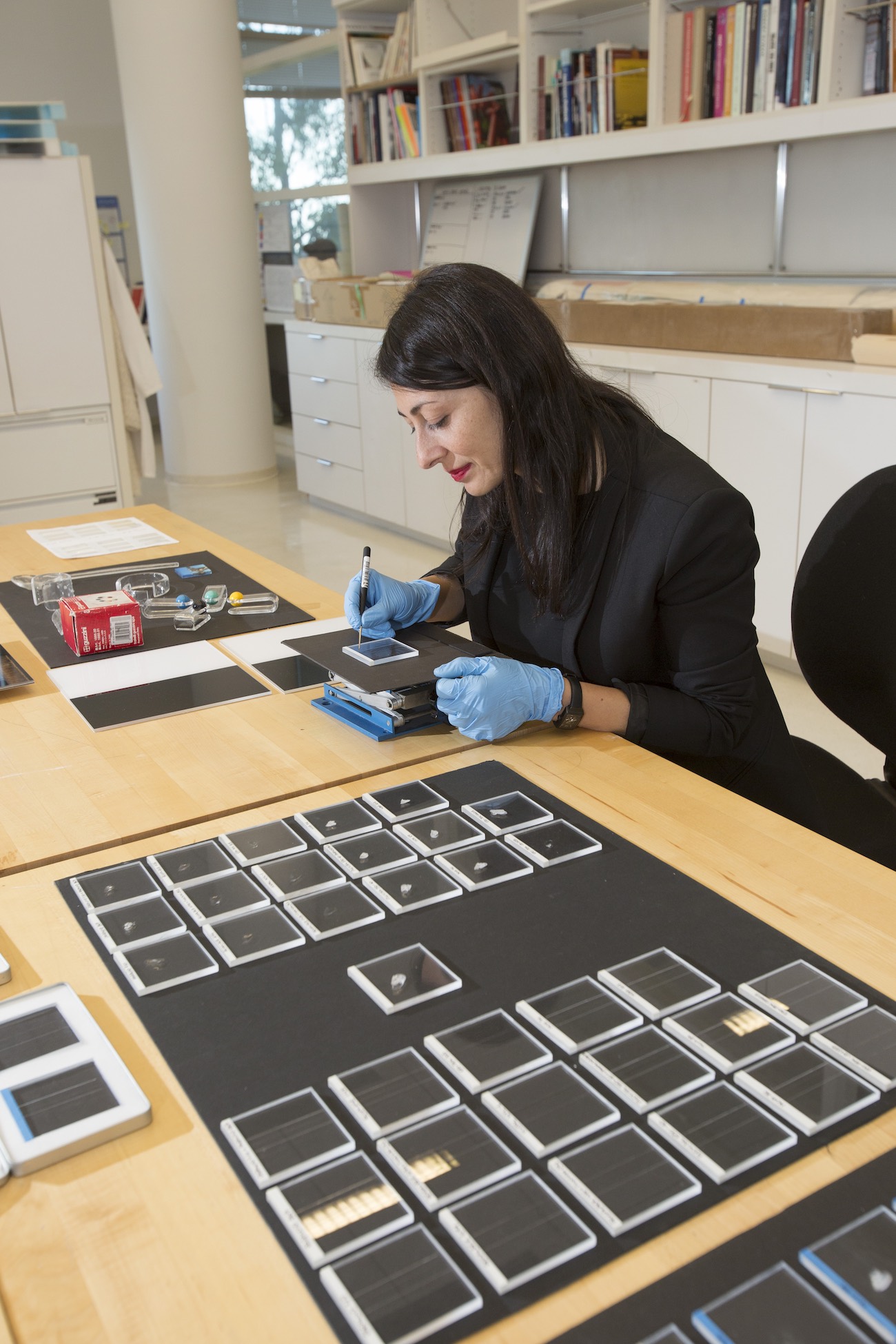
Testing surface repairs on plastic materials as part of the Preservation of Plastics project at the Getty Conservation Institute
As a research specialist at the Getty Conservation Institute, I’ve been working on the Preservation of Plastics project. Recently, along with fellow Conservation Institute Science staff and the independent conservator and researcher Julia Langenbacher, I’ve been studying treatment options for poly(methyl methacrylate) or PMMA, both in its use as an artistic medium and as a photographic face-mount.
PMMA is more impact resistant than glass, but it’s also more susceptible to surface damages, such as scratching chipping, and gouging. Conducted within the Conservation Institute’s Preservation of Plastics project, our research responds to the limited treatment options for PMMA surface damage. The current options are often highly invasive.
The aim of our study was therefore to investigate less–invasive treatments able to successfully recover the lost transparency. Fill materials and methods to repair scratches and chips without modifying the PMMA were first tested on both cast and extruded clear PMMA test samples and subsequently on damaged PMMA mock-ups.
The potential of each fill material to improve the visual appearance of damaged PMMA surfaces was assessed with naked eye observations, as well as with optical microscopy. Refractive index (RI) measurements were carried out to determine the match between the RI of the filling products and that of PMMA. Composition of the fill materials was determined using Fourier transform infrared spectroscopy (FTIR) analysis, and their stability was evaluated before and after accelerated light aging using FTIR and color measurements.
Fill materials and methods that provided the best results were finally used to treat scratches and chips on selected damaged PMMA works of art (objects and face-mounted photographs) from museum collections.
I will be presenting this research at the International Council of Museum – Committee for Conservation (ICOM-CC) 18 Triennial Conference in Copenhagen on Thursday, September 7, during the Modern Materials and Contemporary Art working group session. The results of this study are published in the conference preprints.
For more information and updates, visit the project website.
See all posts in this series »





Comments on this post are now closed.